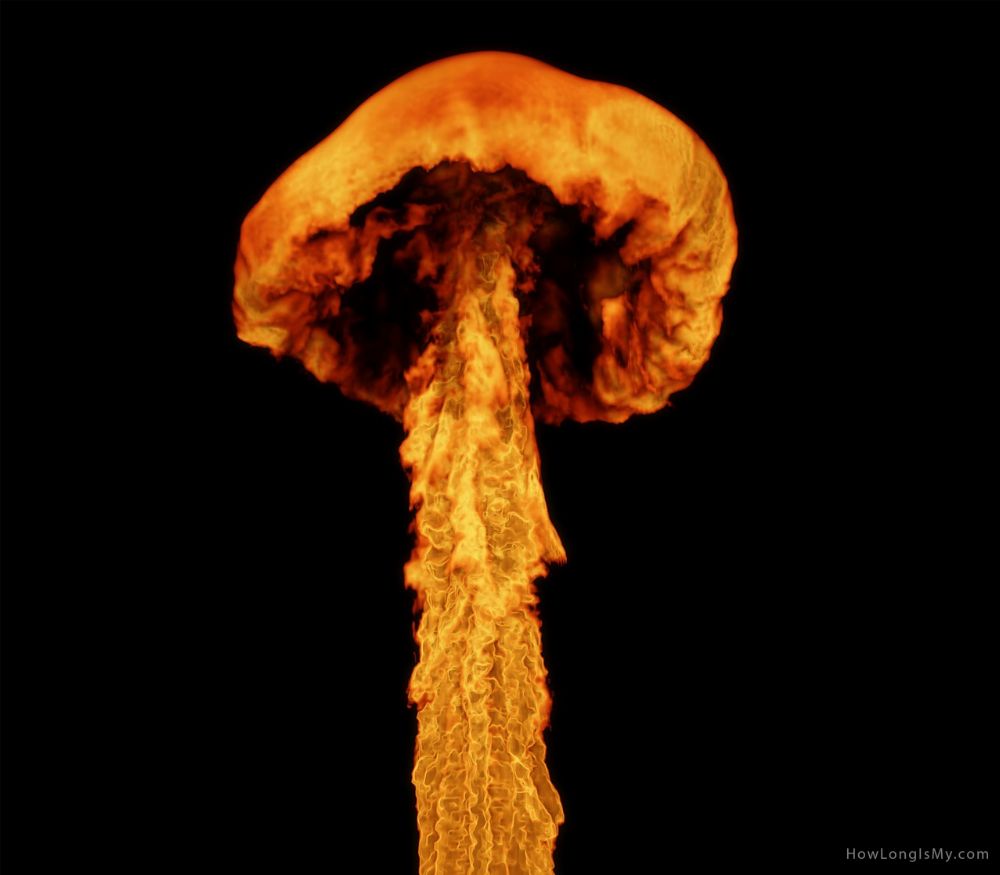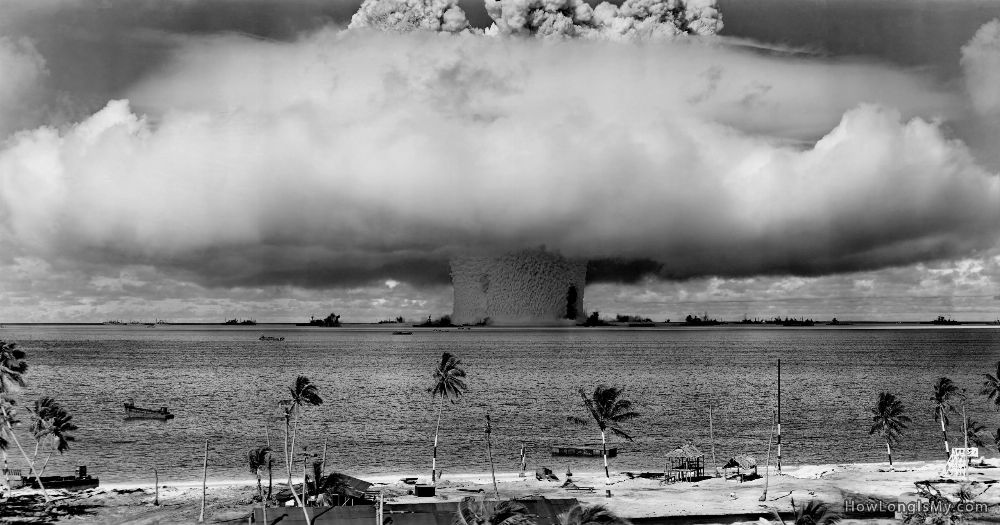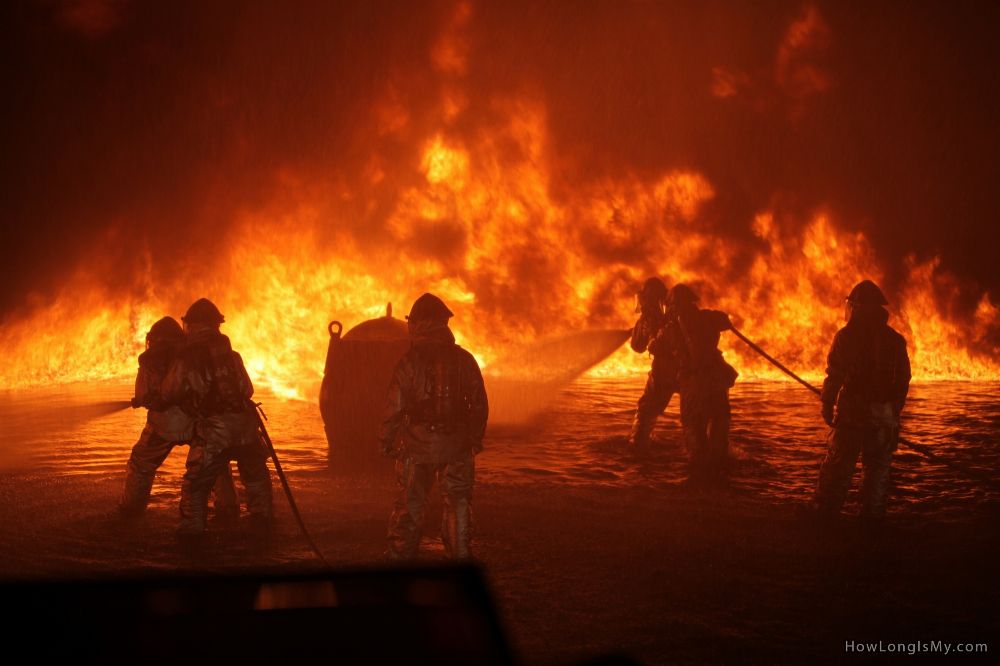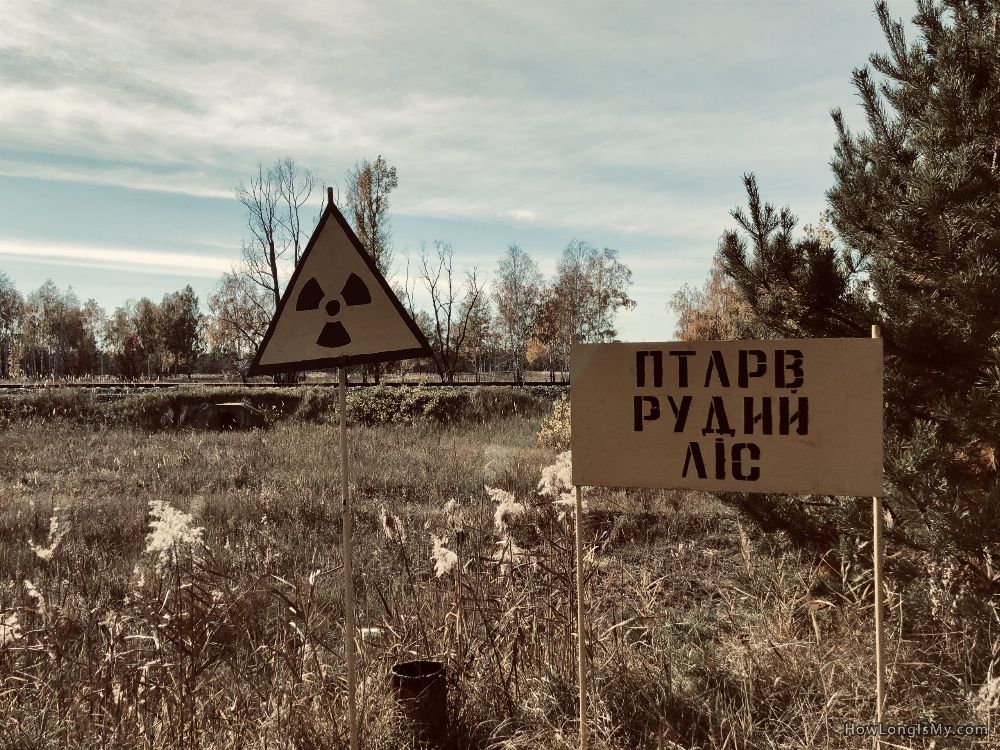A nuclear explosion occurs when there is an intense release of energy from the rapid chain reaction of nuclear fission or fusion. The effects of a nuclear explosion can be catastrophic and can vary based on the size of the explosion, the altitude at which it occurs, and the type of weapon used. Here’s a general overview of what would happen in the case of a nuclear explosion:
Primary Effects
 The explosion releases an enormous amount of energy in the form of intense heat, light, and a shockwave. The shockwave travels at supersonic speeds, causing widespread destruction near the explosion site. Buildings, infrastructure, and objects in the vicinity are heavily damaged or destroyed.
The explosion releases an enormous amount of energy in the form of intense heat, light, and a shockwave. The shockwave travels at supersonic speeds, causing widespread destruction near the explosion site. Buildings, infrastructure, and objects in the vicinity are heavily damaged or destroyed.
The nuclear event creates a fireball of extremely high temperatures, capable of vaporizing everything within its immediate vicinity. This fireball radiates intense heat, causing fires to ignite in surrounding areas. The shockwave generated by the explosion can cause severe damage to structures and infrastructure. The force of the shockwave can lead to collapsed buildings, shattered windows, and flying debris, causing injuries and fatalities.
A nuclear explosion produces various forms of harmful radiation, including thermal radiation, blast radiation, and ionizing radiation. Ionizing radiation can have both immediate and long-term health effects on humans and the environment, including radiation sickness, genetic mutations, and increased cancer risks.
High-altitude nuclear bombs can generate an electromagnetic pulse (EMP) that can damage or disable electronic devices and power grids over a wide area. This can lead to widespread disruption of communication, transportation, and essential services. If the explosion occurs near the ground or at a low altitude, it can cause a significant amount of radioactive material to be lifted into the atmosphere. This material can fall back to the ground as nuclear fallout, contaminating large areas and posing long-term health risks.
Secondary Effects
 A nuclear explosion can also have secondary effects, such as triggering fires due to the initial heat and igniting flammable materials. Additionally, the destruction caused by the explosion and the resulting chaos can lead to societal and economic upheaval. The consequences of a nuclear explosion can be devastating and far-reaching, affecting not only the immediate blast zone but also surrounding areas and potentially having global impacts, especially in the case of a larger-scale explosion. This is why efforts to prevent nuclear proliferation and promote arms control are crucial for global security and stability.
A nuclear explosion can also have secondary effects, such as triggering fires due to the initial heat and igniting flammable materials. Additionally, the destruction caused by the explosion and the resulting chaos can lead to societal and economic upheaval. The consequences of a nuclear explosion can be devastating and far-reaching, affecting not only the immediate blast zone but also surrounding areas and potentially having global impacts, especially in the case of a larger-scale explosion. This is why efforts to prevent nuclear proliferation and promote arms control are crucial for global security and stability.
Unveiling the Length of Nuclear Contamination: Impact and Duration
The duration of nuclear contamination depends on several factors, including the type of radioactive material released, the environment in which the contamination occurs, and the specific isotopes involved. Radioactive materials decay over time, transforming into other elements and eventually becoming less hazardous. The time it takes for half of the atoms in a radioactive substance to decay is called the “half-life.”
Here are some general guidelines for different types of radioactive materials
Short-Lived Radioisotopes – Some radioisotopes have short half-lives, ranging from minutes to hours. This means that they decay relatively quickly, and their contamination effects diminish rapidly. However, these isotopes can be extremely hazardous in the short term.
 Intermediate-Lived Radioisotopes – Some radioisotopes have half-lives ranging from days to years. While they persist longer than short-lived isotopes, their contamination effects also decrease over time. Proper cleanup and containment measures can help reduce their impact.
Intermediate-Lived Radioisotopes – Some radioisotopes have half-lives ranging from days to years. While they persist longer than short-lived isotopes, their contamination effects also decrease over time. Proper cleanup and containment measures can help reduce their impact.
Long-Lived Radioisotopes – Certain radioisotopes have very long half-lives, spanning decades, centuries, or even millennia. These isotopes can pose contamination risks for an extended period. However, their actual impact depends on factors like the environment, dispersion mechanisms, and the dose received by living organisms.
Contaminated Areas – The duration of nuclear contamination also varies based on the environment. Contaminated soil, water bodies, and structures may retain radioactive materials for different lengths of time. Remediation efforts can help mitigate contamination in affected areas.
Human Health Impact – The potential impact on human health is influenced by factors such as the type of radiation emitted (alpha, beta, gamma), the amount of contamination, exposure duration, and the methods used to limit exposure. Short-term exposure can lead to acute effects, while long-term exposure increases the risk of chronic health issues, including cancer.
Cleanup and Remediation – Human efforts to clean up and remediate contaminated areas can accelerate the reduction of contamination. Proper decontamination practices, isolation of contaminated materials, and other mitigation measures can significantly decrease contamination levels.
Government Regulations – Government agencies establish guidelines for allowable levels of radioactive contamination, which often consider factors like half-life and health risks. Cleanup efforts are typically designed to bring contamination levels below these regulatory limits.
The aftermath effects
The effects of nuclear contamination can be complex and long-lasting. The management of radioactive contamination requires careful planning, monitoring, and scientific expertise to ensure the safety of both the environment and human health.
An example of post-nuclear event recovery
 After the atomic bombing of Hiroshima in 1945, the city underwent a process of recovery and decontamination to reduce radiation levels and make it safe for habitation. The timeline for Hiroshima to become populated to safe levels of radiation varied depending on the specific locations within the city and the isotopes involved.
After the atomic bombing of Hiroshima in 1945, the city underwent a process of recovery and decontamination to reduce radiation levels and make it safe for habitation. The timeline for Hiroshima to become populated to safe levels of radiation varied depending on the specific locations within the city and the isotopes involved.
The immediate aftermath of the bombing saw extremely high radiation levels that posed an immediate and severe health risk to survivors and rescue workers. The city was not safe for habitation immediately after the explosion. Short-lived radioactive isotopes, such as iodine-131 and cesium-137, decayed relatively quickly, leading to a reduction in radiation levels within the weeks and months following the bombing. This allowed some recovery and cleanup efforts to begin. The city undertook extensive efforts to clean up and decontaminate affected areas. Contaminated soil was removed and replaced, buildings were reconstructed, and infrastructure was repaired. These efforts aimed to reduce radiation levels and make the city safe for habitation.
 The city area became safe for habitation and population relatively soon after the bombing due to the city’s proactive cleanup and decontamination efforts. While some residual radiation might still be present, the city’s ongoing monitoring, health studies, and safety measures have allowed it to become a functional and habitable urban center.
The city area became safe for habitation and population relatively soon after the bombing due to the city’s proactive cleanup and decontamination efforts. While some residual radiation might still be present, the city’s ongoing monitoring, health studies, and safety measures have allowed it to become a functional and habitable urban center.
